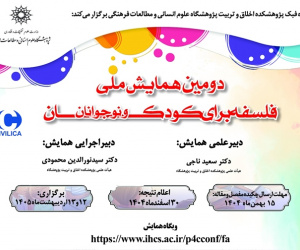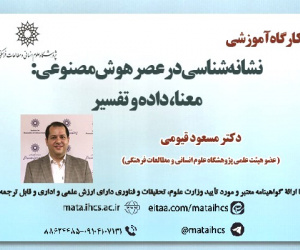بررسی نقش مؤلفۀ زیستی بطن خواهی در شکل گیری اندام های معماری (مقاله علمی وزارت علوم)
درجه علمی: نشریه علمی (وزارت علوم)
آرشیو
چکیده
برخی مفاهیم در میراث روان- تنی انسان ریشه عمیقی دارند و خصیصه ای فرازمانی و فرامکانی هستند. فضاها و آثار معماری برخاسته از این مفاهیم، معمولاً مانایی بیشتری نشان می دهند. ازجمله این مفاهیم، «بطن خواهی» است که با ارزش های زیستی و مادرانه در پیوند است. از این رو این پژوهش به بررسی چگونگی تأثیرگذاری مؤلفه بطن خواهی بر اندام های معماری پرداخته است و درپی پاسخ به این پرسش است که تجلی و بروز معمارانه خصیصه بطن خواهی به چه صورت هایی بوده و شواهد عینی آن کدام است؟ این پژوهش ضمن معرفی مؤلفه بطن خواهی به عنوان یکی از کهن ترین خواهش های زیستی و روانی انسان، قصد دارد تأثیر آن بر شکل گیری و ماندگاری میراث معماری و کارایی آن بر گزینش و برپایی اندام های بطن گونه معماری را توضیح دهد. روش پژوهش مبتنی بر استدلال منطقی و تحلیل داده های کتابخانه ای است که براساس هدف پژوهش در سامانه ای منطقی، مفاهیم از حوزه های نظری به معماری انتقال می یابد. یافته ها نشان می دهد، پسند و طلب فضای حفره ای با وجود و پرشماری آثار دست کند در صخره ها و پناهگاه های زیرزمینی سرزمین های گوناگون، چیزی فراتر از ملاحظات سکونتی است و می تواند برخاسته از یک میل بیولوژیکی و زیستی به نام بطن خواهی باشد. با رانش این میل، حفره گزینی برای انسان ها نوعی تقدیر زیستی است. خصیصه ای که به آن خو گرفته و با آن آرام می گیرد. حتی امروزه هم که با پیشرفت فناوری امکان ساخت فضاهای فراخ فراهم شده است، میل به فضاهایی که او را همچون گذشته زیستی اش در بر و درآغوش بگیرند، همچنان پابرجاست.Investigating the role of the biological component of Wombphilia in the formation of architectural organs
Certain concepts in the human psychosomatic heritage have deep roots, transcending time and place. Spaces and architectural works that arise from these concepts often exhibit a greater durability. One such concept is "wombphillia," which refers to maternal values and, according to its interpretation, has developed as a consistent characteristic throughout the architecture of various eras. Analyzing this concept can lead to a more comprehensive understanding of the architectural legacy and the factors influencing it. This study investigates the influence of the "wombphillia" component on architectural structures and seeks to answer the question of how the embodiment of "wombphillia" and maternal values manifests in architecture and in which architectural forms it can be traced. Through an interdisciplinary approach, the present paper introduces "wombphillia" as one of humanity's most ancient biological and psychological desires and attempts to explore its origins in the development and organization of architecture. The research method relies on logical reasoning and analysis of library data; based on the research objective, concepts are transferred from theoretical domains to architecture within a systematic logical framework. The findings suggest that the preference for and pursuit of cavernous spaces, evidenced by the existence and abundance of rock-cut structures and subterranean shelters across various regions, extends beyond mere habitation considerations and can be rooted in a biological and instinctual drive known as "wombphillia." Driven by this instinct, selecting cavernous spaces represents a kind of biological destiny for humans—a characteristic to which they have become accustomed and find comfort in. Even today, with technological advancements enabling the construction of expansive spaces, the desire for spaces that embrace him as in his biological past is still there.








